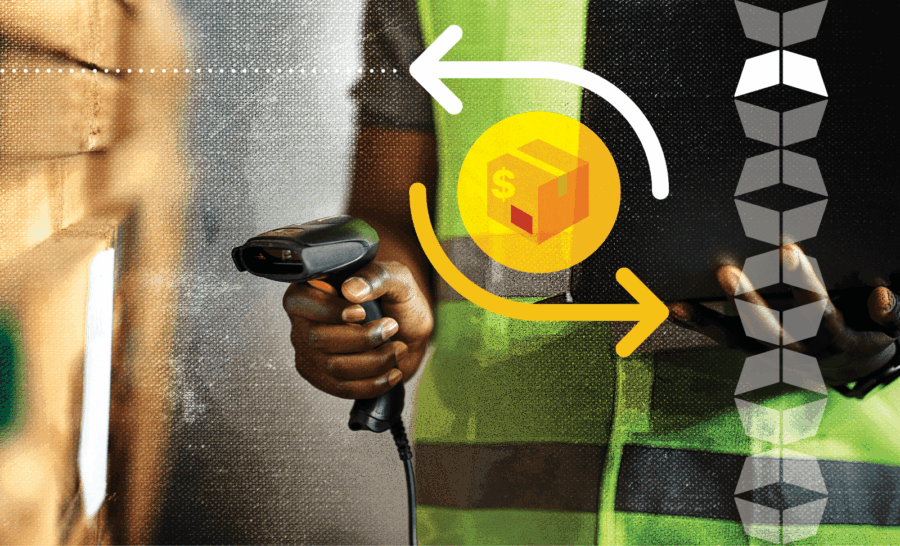How to Choose and Switch to a New 3PL Without the Headache in 2025
As a concrete wall tore through the back of my van, I realized there’s nothing worse than moving homes. I was relocating from Los Angeles to San Francisco. There was a time rush to get out of the old apartment and figuring out the logistics of getting to the new place was a nightmare. As a result, I didn’t pay enough attention and cut a corner in the parking garage, creating a terrible start to the transition.
In many ways, switching to a new 3PL creates many of the same headaches as moving houses. It’s potentially time consuming, expensive, and laden with risks of misstep. Worst of all, it’s never certain the new place will be better than the old one.
Why is switching 3PL partners so difficult?
In a co-launched WSI/Supply Chain Dive research report, 49% of retailers said they planned to change 3PL providers within three years. Though many said they were fine with their current service, there is clearly an underlying dissatisfaction.
While things may be “good enough,” it wouldn’t be surprising that the reason keeping them from switching to a new 3PL right away are the complexities.
Successfully changing providers is part science, part art. Though it’s different for everyone, the following factors tend to cause the most pain:
- No one at the 3PL truly “owns” the transition. Instead, the customer deals with a morass of people who each have accountability for part of the transition, but not the whole thing. The customer deals with too many people, none of whom have a complete picture. Communication and overall clarity suffer, and if anything goes off track, there’s no one who feels it’s their sole responsibility to drive resolution.
- Insufficient time is devoted to system integration. Not allowing enough time to build out and test systems integrations prior to go-live can be a serious problem. If the data exchange between the retailer and 3PL isn’t functioning properly at launch, it can lead to major operational disruptions: orders don’t sync correctly, inventory counts are inaccurate, SKUs are mismatched, tracking numbers fail to update, and customer service teams are flooded with complaints about missing or delayed shipments. Fulfillment technology is an essential component of today’s order fulfillment processes, and without the ability to sync, it’s easy for operations to sink.
- The cost of the transition is significant. Between paying the old 3PL for moving materials out, carriers for transporting the products, and the new 3PL for receiving in the new product, there is a real cash hit when you decide to move. Of course, the intent of switching providers is to generate long-term ROI through better service, rates, etc., but there’s no getting around the upfront cost.
- The initial inbound process is a mess. The initial inbounds to the new 3PL are disastrous, and not enough attention is paid to course-correcting. When a customer leaves a 3PL, the incentive for that 3PL can be to pack up the product as quickly as possible. This means disorganization; SKUs commingled, misplaced, mis-labeled, etc. When the new 3PL receives this disorganized product, extensive time and expense must go into fixing the issue.
- There’s poor alignment on the scope of work required. The old 3PL may not provide great service quality, but typically the relationship is established enough where the 3PL and customer are on the same page about what the customer’s true needs are, and what the 3PL will charge for it. The customer goes to the new 3PL and there is a gap in the two parties’ assumptions about what work is required and what the pricing covers, causing cost expectations and trust to falter.
What’s changing: New pressures, new stakes
Finding and switching to a new 3PL is no longer a brief conversation. The critical nature of the services 3PLs provide among today’s growing supply chain challenges and complexities make it a boardroom conversation. Market uncertainty, persistent inflation, and tight margins are driving companies to re-evaluate the true cost and value of their logistics partners.
It’s no longer just about service levels or freight rates. Companies are asking:
- Can this new 3PL scale with us during demand volatility?
- Is their infrastructure modern enough to support real-time visibility?
- Will their pricing model remain sustainable in a shifting cost environment?
The bar has been raised. Merchants can’t afford inefficient partners eating into margin. At the same time, budgets for switching are tighter than ever, which means selecting the right partner the first time is crucial, and the cost of a failed transition has never been higher.
The hidden challenge: Growing data complexity
Another increasingly common pain point is data integration. According to a 2024 NTT Data Third-Party Logistics Study, only 49% of businesses indicated they were satisfied with 3PL IT capabilities.
Tech stacks have expanded, and businesses are juggling more platforms than ever, such as ERPs, ecommerce storefronts, retail portals, subscription billing tools, WMS, CRM, and more.
This data sprawl means the operational burden of switching 3PLs has grown exponentially:
- More systems need to integrate cleanly with the new 3PL
- Data mapping becomes harder due to inconsistent formatting
- Delays in syncing inventory or order flow can cause customer-impacting errors
Not every 3PL is equipped to handle this level of integration complexity. Those still reliant on dated tech or manual processes can inadvertently turn a manageable transition into an operational fire drill. Brands must now vet providers not just on logistics execution, but on their ability to serve as a tech-integrated partner.
Managing successful 3PL transitions
Factors like those above cause a 3PL relationship to be sticky ; and “My current provider isn’t great, but I’d rather not deal with the headache, expense, and risk of moving” is a common refrain. That thought process is rational and, in many instances, may be the right choice. However, there’s a real opportunity cost. To state the obvious, if a merchant’s operations arm isn’t effective, the company won’t be able to grow profitably.
Unfortunately, there is no magic formula for a perfect transition. However, merchants and their new 3PL can take several concrete steps to grease the wheels:
On the 3PL side:
- Assign an experienced project or customer success manager to oversee and coordinate the transition. While the client may need input from several departments at the 3PL to appropriately setup and integrate the account, it all flows through this “owner.” If there are ever questions or issues that require course correction, there is clarity as to who is responsible. In fulfillment, customer success goes beyond basic customer service, and these dedicated people are integral to seamless transitions.
- Create a robust implementation project plan with timelines that appropriately build up to the desired go-live date. It is shocking how many components must come together to successfully operate a new account at scale. Though seemingly simple, a plan that is easily accessible (we use a cloud-based tool), thorough, and updated regularly is critical to avoid things falling through the cracks.
- Devote time to fleshing out account requirements. The merchant and the new 3PL should spend time truly understanding what is needed and then documenting those needs as part of the contract. The merchant shouldn’t be surprised by the invoice when the account goes live. If the business requires a shift in scope down the line, this will also help keep the parties aligned.
On the merchant side:
- Pursue a balance-sheet-healthy 3PL that wants to partner and amortize the cost of the merchant’s move. In the right circumstance, a 3PL may be willing to serve as a pseudo-bank, covering the transition costs initially and allowing the customer to pay the obligation down over time. This alleviates the cash flow crunch associated with moving. Note that 3PLs may only consider this for customers they view as having long-term prospects; customers looking for short-term transactional relationships will likely be out of luck.
- Pay to verify shipments from the prior 3PL at the smallest tracked unit of measure; minimize the amount of product coming from the prior 3PL. The safest assumption is that product receipts from the prior 3PL will be disorganized, and you can’t trust what the packing list or cases say. If that messiness isn’t dealt with upfront, it will cause problems for months to come that will threaten to bring a merchant’s fulfillment to a screeching halt. The cost of this doomsday is much greater than the cash outlay for fixing the problem during onboarding. In addition, if possible, the merchant should drain down inventory from its current 3PL prior to making the move such that the new 3PL is receiving mostly product from manufacturers (which are more reliable).
The bottom line
In the complex world of 3PL transitions, the challenges are real, but so are the opportunities. While switching 3PLs can be daunting, it doesn’t have to be a headache. The “magic sauce” is finding a provider that brings together operational excellence and integration know-how, and that’s willing to be flexible in how they partner with you.
The landscape is shifting. Your 3PL should be too.
At WSI, we specialize in understanding the intricate logistics needs of our customers. Our dedicated customer onboarding team is committed to ensuring a seamless transition, guiding you through every phase with expertise and precision. We firmly believe in the power of partnership and are always open to exploring innovative financial solutions to ease the burden of upfront costs. Whether your goal is optimizing your supply chain or enhancing fulfillment operations, you can trust WSI to be your dedicated partner in this journey. Contact a fulfillment expert today to find out more.
About the Author

Peter Davis
Peter Davis is the Vice President of Fulfillment at WSI, bringing a blend of experience in logistics, business, and corporate law. Peter works across teams, with the goal of using an interdisciplinary approach to identify gaps and drive previously unseen solutions. WSI’s commitment to this approach is a key reason for its success in delivering reliable and insightful fulfillment services over the last six decades.



